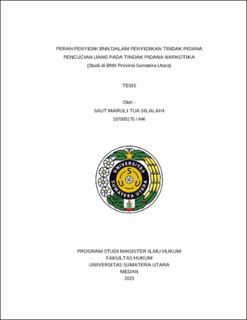| dc.description.abstract | Narcotics criminal offense is a Predicate Criminal offense in money laundering criminal offenses. The proceeds from the criminal offense of Narcotics have the potential to be reused to commit similar or new crimes. Indonesia is in a medium -high risk category in a financial system that is considered vulnerable to money laundering. BNN (National Narcotics Agency) with its authority must be able to eradicate money laundering criminal offenses originating from narcotics criminal offenses.
This research uses a normative juridicial research method supported by secondary data sources and qualitative analysis.
The result of this study indicates that BNN investigators have the authority to investigate money laundering criminal offenses originating from narcotics criminal offenses by paying atttention to aspects such as the LHA (Analysis Result Report) from PPATK (Financial Transaction Reports and Analysis Centre), asset confiscation, in absentia examination, and the evidentiary system. Law enforcement is affected by several factors; namely, legal factors, law enforcement factors, facilities and infrastructure factors, community factors, and cultural factors. BNN investigators play a role in revealing perpetrators and their networks, collecting and analyzing information, tracing and seizing assets, finding new types of Narcotics, impoverishing perpetrators, providing information and developments on other law enforcement agencies. The obstacles faced by BNN investigators are legal substances barriers, legal structure barriers, and legal culture barriers. Obstacles in legal substance are Article 74 of Law No. 8/2010 concerning the Prevention and Eradication of Money Laundering Criminal offenses, and Law No. 1/2006 concerning Mutual Assistance in Criminal Matters. Obstacles to the legal structure are limited number of BNN investigators, the limited knowledge and ability of BNN investigators. The obstacles to the legal culture is the high number of attempts to bribe BNN investigators from perpetrators. | en_US |


